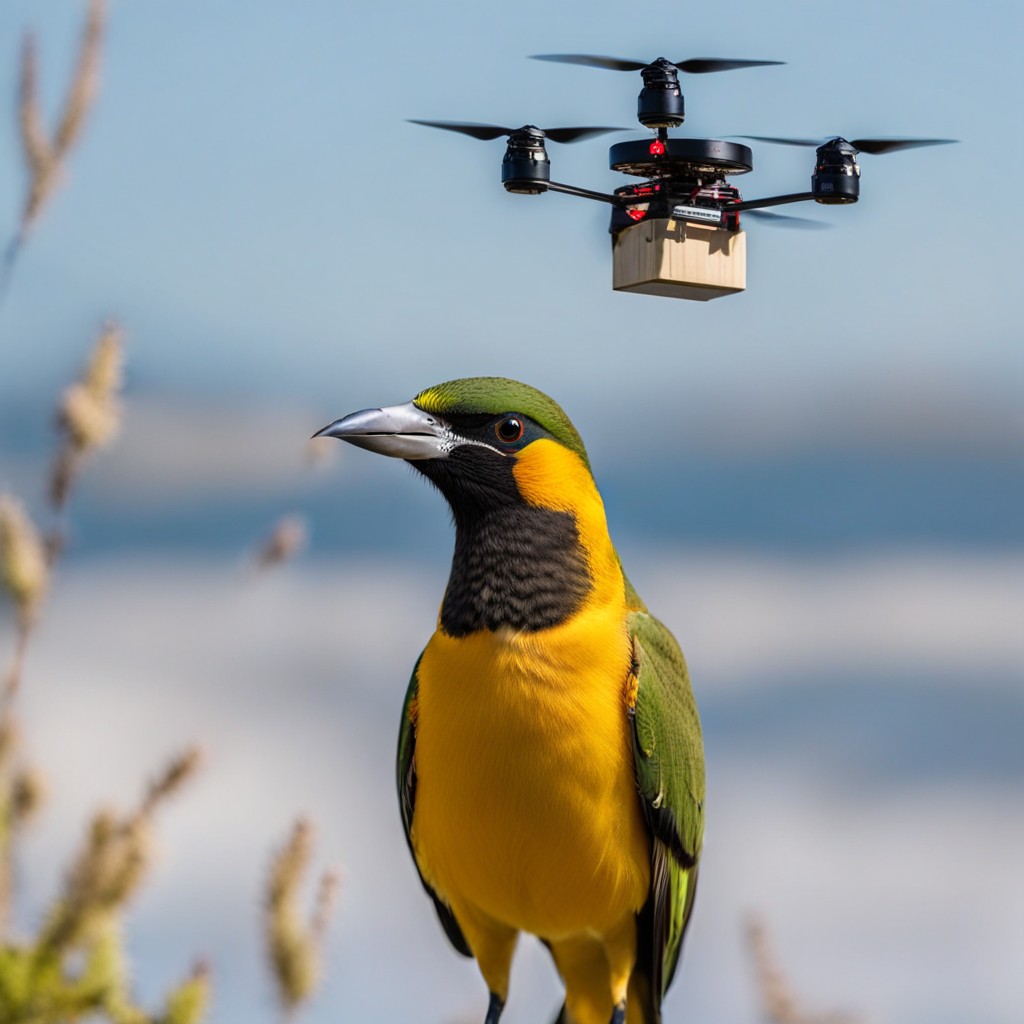The development of a ‘flapping wing’ bird drone by Chinese researchers at the Northwestern Polytechnical University (NPU) represents a significant leap in biomimicry and drone technology. Let’s explore some key aspects of this achievement:
**1. ** **Biomimicry and Flapping Wing Technology:**
– The use of ‘flapping wing’ technology is inspired by the flight patterns of birds. Mimicking the intricate motion of bird wings allows for more agile and versatile drone movement, making it an exciting development in biomimicry.
**2. ** **Scientific Significance:**
– The successful development of a flapping wing drone is considered a notable scientific achievement. It demonstrates advancements in aerodynamics, robotics, and control systems, showcasing the potential for nature-inspired solutions in engineering.
**3. ** **Agility and Maneuverability:**
– Flapping wing drones are expected to offer improved agility and maneuverability compared to traditional fixed-wing or rotor-based drones. This could make them well-suited for tasks that require precise control and navigation, such as surveillance or environmental monitoring.
**4. ** **Applications:**
– The development of a flapping wing drone opens up diverse potential applications. These could include surveillance and reconnaissance in challenging environments, wildlife monitoring without causing disturbance, and even search and rescue missions where agility is crucial.
**5. ** **Technological Challenges:**
– Creating a drone with flapping wings involves overcoming significant technological challenges. The design must balance factors such as weight, power consumption, and aerodynamics to achieve efficient and stable flight.
**6. ** **Impact on Drone Technology:**
– This development may influence the future trajectory of drone technology. If flapping wing designs prove successful and scalable, they could inspire further innovations in drone engineering, leading to new generations of aerial vehicles with enhanced capabilities.
**7. ** **Celebration in China:**
– The celebration of this achievement in China reflects the country’s emphasis on scientific and technological advancements. It showcases a commitment to innovation and a desire to be at the forefront of cutting-edge research and development.
**8. ** **International Collaboration:**
– The success of such projects often involves collaboration between researchers, engineers, and institutions. International collaboration in fields like biomimicry and robotics can contribute to a global pool of knowledge and expertise.
**9. ** **Future Developments:**
– The development of a flapping wing drone is likely a stepping stone for future advancements. Researchers may continue to refine the design, address challenges, and explore additional applications for this unique flight technology.
**10. ** **Ethical and Environmental Considerations:**
– As with any technological advancement, ethical considerations come into play. The use of drones, even biomimetic ones, raises questions about privacy, safety, and environmental impact. Striking a balance between innovation and responsible use is crucial.
In summary, the development of a flapping wing bird drone by Chinese researchers represents an exciting intersection of biology and technology. It not only showcases the prowess of the Northwestern Polytechnical University but also highlights the potential for nature-inspired solutions to advance the field of drone technology. As these innovations continue to unfold, they may shape the future landscape of aerial robotics.
Let’s explore some additional dimensions of the development of the flapping wing bird drone:
**11. ** **Inspiration from Nature:**
– Biomimicry, in this case, involves drawing inspiration from the complex and efficient flight patterns of birds. By emulating nature’s design, researchers aim to achieve a more versatile and energy-efficient mode of flight.
**12. ** **Energy Efficiency:**
– Mimicking the flapping motion of bird wings suggests a potential for improved energy efficiency compared to traditional drone designs. This could lead to longer flight times and increased endurance, critical factors in various drone applications.
**13. ** **Potential for Urban Environments:**
– The agility of flapping wing drones may make them well-suited for navigating complex urban environments. Their ability to maneuver through tight spaces and handle unpredictable obstacles could be advantageous for tasks such as infrastructure inspection or monitoring.
**14. ** **Research Impact:**
– The development of a flapping wing drone adds to the body of research exploring unconventional drone designs. Insights gained from this project may contribute to advancements in aerodynamics, control systems, and materials science, influencing broader aerospace research.
**15. ** **Educational Value:**
– Such groundbreaking projects have educational value, inspiring future generations of scientists, engineers, and researchers. The combination of nature-inspired design and cutting-edge technology serves as an engaging example of the interdisciplinary nature of modern scientific endeavors.
**16. ** **Potential for Miniaturization:**
– The flapping wing design could be conducive to miniaturization, allowing for the creation of smaller, more agile drones. Miniaturized drones could find applications in areas such as environmental monitoring, where access to confined spaces is essential.
**17. ** **Commercial Applications:**
– Beyond scientific and research applications, the successful development of flapping wing drones could lead to various commercial applications. Industries such as agriculture, security, and delivery services may find innovative ways to leverage the unique capabilities of these drones.
**18. ** **Competition and Collaboration:**
– The emergence of flapping wing drone technology might spur both competition and collaboration within the aerospace industry. Different research groups and companies may explore their own variations, fostering a dynamic landscape of innovation.
**19. ** **Public Engagement:**
– Celebrating scientific achievements, especially those that capture the imagination, can enhance public engagement with science and technology. The public’s interest in advancements like flapping wing drones can lead to a greater understanding and appreciation of scientific research.
**20. ** **Global Implications:**
– As nations invest in cutting-edge technologies, developments in drone technology, biomimicry, and aerospace research contribute to the global landscape. Collaborative efforts and shared knowledge have the potential to advance technological frontiers worldwide.
In conclusion, the development of a flapping wing bird drone goes beyond being a technological feat; it’s a convergence of engineering ingenuity, biomimicry, and the pursuit of novel solutions to real-world challenges. The implications of this research reach into various industries and have the potential to reshape how we approach aerial robotics in the future. As this field continues to evolve, it brings us closer to unlocking new possibilities in unmanned flight.


